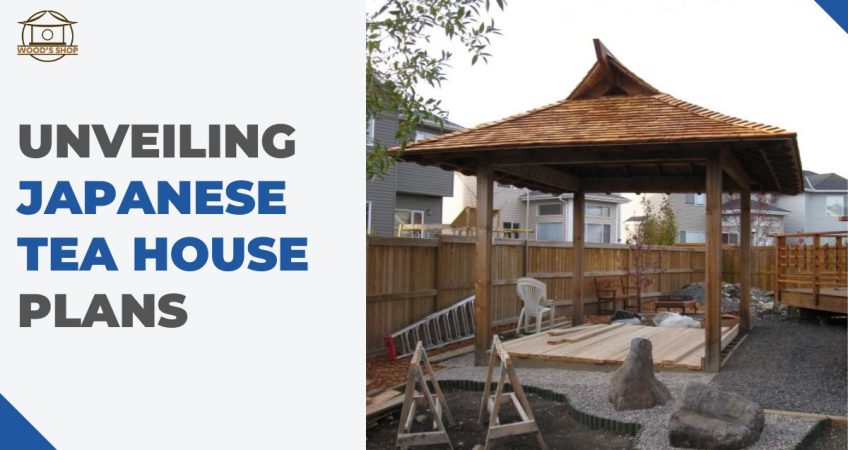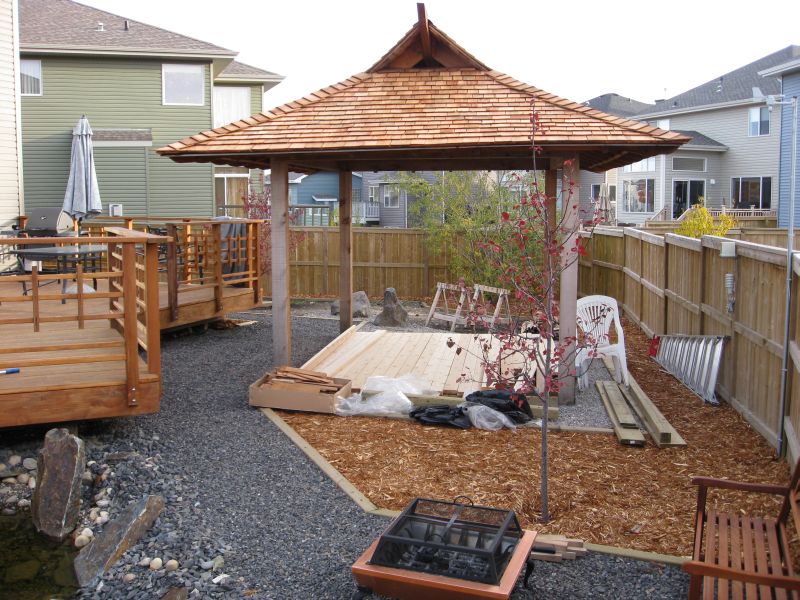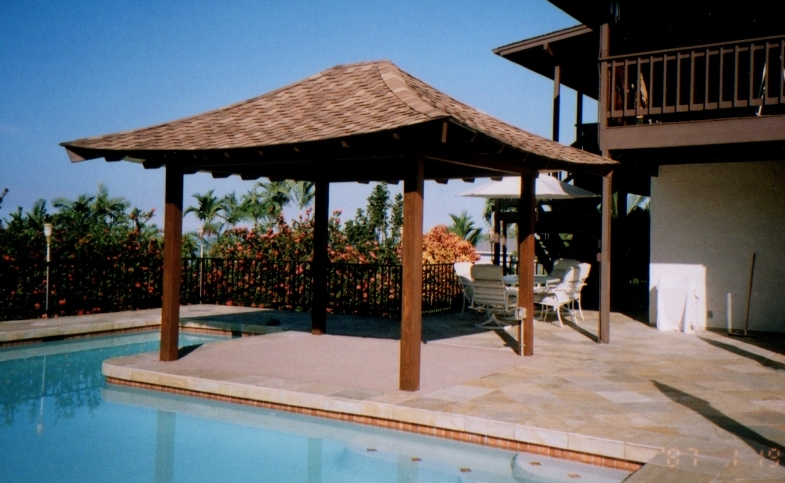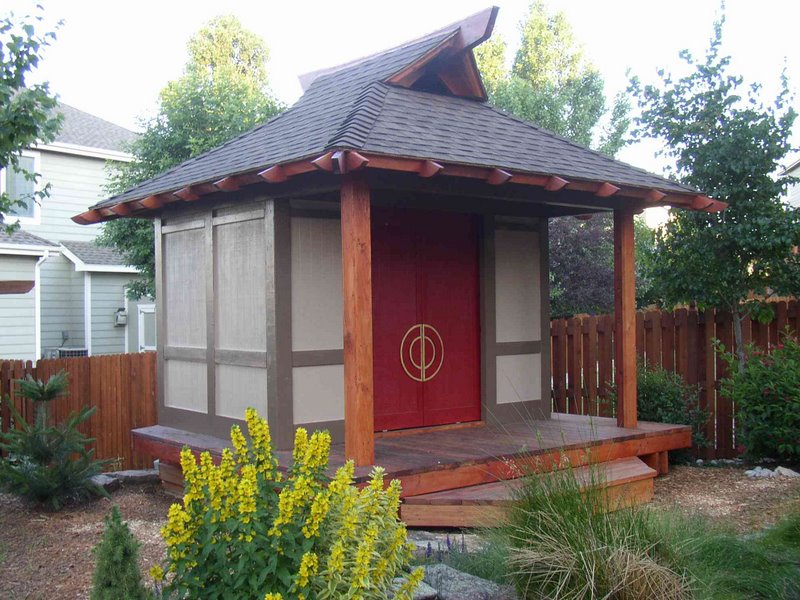Architectural Elegance: Unveiling Japanese Tea House Plans

Immerse yourself in the enchanting world of Japanese tea houses – a timeless testament to architectural elegance and harmony. These unique structures, infused with the soul of Japan, exude an elegance that transcends the simple beauty of design, symbolizing a rich cultural heritage. With their distinctive architectural facets and tranquil atmosphere, they serve as a fascinating prism through which we can glimpse the essence of traditional Japanese aesthetics.
Our journey today takes us deep into the heart of these captivating constructions, as we unravel the intricacies of Japanese tea house plans. Buckle in, as an exciting exploration awaits!
The Essence of Japanese Tea Houses Plans
The Japanese tea house, known as ‘Chashitsu‘ in Japan, is more than a mere architectural entity. It’s a space sculpted by history, tradition, and the principles of Zen, reflecting a quiet tranquility that imbues every aspect of Japanese culture.
Emerging in the Muromachi period (14th to 16th centuries), the tea house was a product of the flourishing tea culture in Japan. It was a venue for Cha-no-yu, the tea ceremony, an event steeped in ritual and spirituality. The tea house was more than a structure; it was a sanctum of culture, reflecting the social and historical underpinnings of its time.
The tea house epitomizes Zen aesthetics – simplicity, modesty, and tranquility. The structure’s humble facade and minimalist interior design embody ‘Wabi-sabi’, the beauty found in imperfection and transience. The tranquility inherent in these tea houses offers a serene retreat from the hustle and bustle of daily life, allowing individuals to explore the peace within.
In Japanese culture, the tea house plays a pivotal role as a space for social interaction, spiritual reflection, and artistic appreciation. It is a platform for understanding and experiencing the principles of Zen firsthand. Furthermore, it nurtures a deep appreciation for the art of tea-making, turning an everyday act into a momentous event charged with symbolic meaning.
Elements of Japanese Tea House Design
Exploring the design elements of a Japanese tea house unveils a world of thoughtful detail and deliberate artistry. Each structure is meticulously crafted to offer an immersive Zen experience, with its exterior aesthetics, interior layout, and choice of materials each playing a pivotal role.
Exterior Aesthetics and Traditional Features
The exterior of a Japanese tea house is designed to blend seamlessly with its natural surroundings. Traditional features such as small, simple windows, and natural, earth-toned colors are used to achieve this harmonious integration. Roji or “dewy path”, leads the way to the tea house, passing through a tranquil garden designed to cleanse the mind and prepare guests for the tea ceremony.

Interior Layout and Functionality
Inside a tea house, you’ll find a minimalist design that strips away unnecessary clutter, allowing the mind to focus on the tea ceremony. Each element has a purpose – from the ‘tokonoma’ (an alcove for displaying art) to the kettle and hearth integrated into the floor. The room’s size is often small, to create an intimate setting that encourages mindful conversation and reflection.
Materials Used in Construction
The materials used in the construction of a tea house are carefully chosen to enhance the connection with nature. Natural, rustic materials such as bamboo, wood, and straw are commonly used. These materials not only echo the principles of simplicity and humility in Zen aesthetics but also contribute to the tea house’s unique atmosphere where time seems to slow, and the outside world fades away.
Read More: San Diego Patio Covers
The Beauty of Japanese Tea House Gardens
The surrounding garden forms an integral part of the Japanese tea house experience, serving as a transition space that prepares guests for the tranquility inside. It’s not merely a decorative element, but rather a carefully laid out landscape designed to help guests shed their worldly worries and step into a world of peace and mindfulness.
The tea house garden, typically known as the ‘Roji‘, or ‘dewy path’, is a natural work of art. It symbolizes the journey to enlightenment, guiding guests along a winding path that encourages introspection, fostering a sense of tranquility. As guests navigate through the garden, they’re subtly guided to shed their worldly thoughts, thus transitioning from the chaos of the external world to the peaceful realm of the tea house.
Landscaping elements in the tea house garden, such as stone paths and bamboo fences, are imbued with symbolic meaning. The stone path, often winding and uneven, represents life’s journey, full of unexpected turns and challenges. Bamboo fences, on the other hand, embody simplicity and humility, resonating with the core principles of Zen. These elements, while aesthetically pleasing, are designed to evoke contemplation and mindfulness.
The garden is a harmonious extension of the tea house, sharing the same design principles of simplicity, naturalness, and tranquility. It is meticulously designed to complement the tea house, setting the tone for the tea ceremony experience. The elements of the garden, from the soothing rustle of bamboo leaves to the gentle gurgle of a small water fountain, create a sensory experience that calms the mind and prepares the guests for the serenity of the tea ceremony. The garden and tea house together form a unified entity, a sanctuary that embodies the essence of ‘Wabi-sabi’ – the beauty of imperfection and transience.

Unveiling Japanese Tea House Plans
There is a wealth of resources available for those interested in the architecture and design of Japanese tea houses. Numerous books, websites, and architectural plans provide detailed insight into the different styles, construction methods, and cultural significance of these unique structures. Furthermore, institutions such as the Urasenke Foundation offer comprehensive resources, including design sketches and construction guidelines, to help enthusiasts and architects understand, design, and construct their own tea houses.
Japanese tea houses come in an array of designs and sizes. While some are grand, expansive structures designed for large gatherings, others are small, intimate spaces created for quiet reflection. The design of a tea house is largely determined by its intended purpose and the natural landscape it is built upon. The traditional tea house, known as a ‘Chashitsu’, typically has a size of around 4.5 meters by 2.7 meters, with an adjoining waiting room called ‘Mizuya’. However, there are variations in design that reflect regional differences and individual preferences.
When choosing a Japanese tea house plan, it’s essential to consider both the practical and aesthetic aspects. Factors such as the size of your available space, budget, and intended use should determine which plan will best suit your needs. Additionally, carefully examining the details of each design can help you understand its cultural significance and choose a plan that resonates with your personal values and ideals.
Read More: Benefits of Having a Pergola in Your Backyard
Crafting Your Own Japanese Tea House
Building your own Japanese tea house can be an immensely rewarding project, allowing you to immerse yourself in the tradition and philosophy of Japanese tea ceremonies.
Step-by-Step Guide to Building a Traditional Tea House
Constructing a traditional tea house involves meticulous planning and attention to detail. Start by choosing a suitable location that blends well with the natural surroundings. Next, sketch a detailed plan, keeping in mind the intended size and purpose of your tea house. Remember, the interior should be simple and functional, with a ‘tokonoma’ or alcove for art display, and a kettle and hearth integrated into the floor. Opt for natural, rustic materials like wood and bamboo for construction. Finally, dedicate time to craft a serene ‘Roji’ or tea garden around the tea house to complete the setup.
Tips for Customization and Personalization
While maintaining the traditional aesthetics and principles of a Japanese tea house, you can add personal touches to make it uniquely yours. Perhaps you might choose to display art that resonates with you in the ‘tokonoma’, or choose a specific kind of wood that holds personal significance. The design of your ‘Roji’ can also be personalized to reflect your journey, with each landscaping element symbolizing aspects of your life or philosophy.

Budget Considerations and Potential Challenges
Building a Japanese tea house can be a costly endeavor, given the emphasis on quality, and natural materials. It’s essential to budget wisely, factoring in the costs of construction materials, labor, and maintenance. Potential challenges include sourcing the right materials, understanding the complex symbolism in traditional tea house design, and creating a harmonious balance between the tea house and its surrounding landscape. Consider seeking advice from experts or those who have undertaken similar projects to ensure the success of your endeavor.
Read More: Mystical Garden Moon Gate
Conclusion
Japanese tea houses serve as a beautiful testament to the country’s rich cultural heritage, embodying the principles of simplicity, naturalness, and tranquility. Their meticulous design and construction, steeped in symbolism and tradition, offer a serene space for introspection and mindful living.
Whether it’s their unique architecture, the calmness of the tea ceremony, or the philosophical wisdom they represent, tea houses have a timeless appeal that transcends geographical and cultural boundaries. We hope this guide inspires you to explore your own tea house plans, blending tradition with personalization to create a space that resonates with your own journey and ideals.
We warmly welcome any questions or comments you may have as you embark on this exciting venture. And if you need further guidance or resources, Wood’s Shop is always here to help. From detailed tea house plans to expert advice, we strive to support your journey in creating a piece of this timeless tradition in your own backyard.
Frequently Asked Questions
1. What is the typical size of a traditional Japanese tea house, and can this be adjusted based on individual preferences?
The traditional tea house, known as a ‘Chashitsu’, typically has a size of around 4.5 meters by 2.7 meters, with an adjoining waiting room called ‘Mizuya’. However, the size can be adjusted based on the available space, individual preferences, and intended use.
2. How can I customize my own Japanese tea house while maintaining its traditional aesthetics?
While it’s crucial to preserve the traditional aesthetics and principles of a Japanese tea house, you can certainly add personal touches to make it uniquely yours. You can display art that resonates with you in the ‘tokonoma’, choose a specific kind of wood that holds personal significance, or personalize the ‘Roji’ (tea garden) to reflect your journey or philosophy.
3. What are some potential challenges to consider when building a Japanese tea house?
Some potential challenges include sourcing the right materials, understanding the complex symbolism in traditional tea house design, and creating a harmonious balance between the tea house and its surrounding landscape. It’s also important to budget wisely, as building a Japanese tea house can be a costly endeavor due to the emphasis on quality and natural materials.